- 1. Shippo - Best Overall Pirate Ship Alternative
- 2. ShipStation - Best for Very High-Volume Sellers
- 3. Easyship - Best for International Shipping
- 4. Sendcloud - Best for European-Focused Merchants
- 5. ShippingEasy - Great for Beginners, Who Need Their First Step Out of Pirate Ship
- 6. AfterShip - Best for Tracking and Branded Delivery Updates
- Final Verdict: Which Pirate Ship Alternative Should You Choose?
Last Updated on November 4, 2025 by Ewen Finser
I tested the top shipping platforms like Shippo, ShipStation, Easyship, and more. Here’s what actually works when you’ve outgrown Pirate Ship.
If you’ve used Pirate Ship, you probably love how simple it is. You log in, paste an address, compare USPS and UPS rates, print your label, and you’re done. It’s free, it’s fast, and it works great for small U.S. sellers. Plus, it speaks to you like a pirate.
But the downside is, once your store starts to grow, the simplicity turns into limitation.
You might want:
- To connect your Shopify or WooCommerce store, instead of pasting addresses.
- To automate labels or batch print 100 orders at once.
- To ship internationally, with customs forms that don’t make you want to scream.
- Or to see tracking updates and returns in one clean dashboard.
That’s where Pirate Ship starts to fall behind, and where other tools like Shippo, ShipStation, and Easyship start to shine.
I’ve tested these platforms while managing shipping for small Shopify stores and direct-to-consumer brands, up to huge businesses selling millions of dollars of products a year on Amazon.
In this review, I’ll walk you through what I liked, what I didn’t, and which tool makes the most sense depending on your setup.
1. Shippo – Best Overall Pirate Ship Alternative
If you like Pirate Ship’s simplicity but need more control, Shippo is the logical next step.
I started using Shippo because I wanted more carrier options and real automation. It’s still one of the best and easiest to use shipping dashboards I’ve tested, and it scales up as your business grows.
Shippo’s automations are really easy to use as they use IF/THEN functionality, which means even a beginner can set up relatively complex automations. Shippo has nearly all the features of Shipstation, but with lower cost and complexity.

Key Features
- Multi-carrier support: Over 85 carriers worldwide, including USPS, UPS, FedEx, DHL, and regional options such as Royal Mail and Evri.
- Automatic order import: Connects to Shopify, WooCommerce, Etsy, eBay, and Amazon.
- Automation rules: IF/THEN automations are very easy to use and set up.
- Batch label printing: Print up to 100 labels at once.
- International shipping: Great rates and support with documentation.
- Scale pricing: The price starts out free, then scales with you as you grow.
Real-World Example
When I first switched from Pirate Ship to Shippo, the difference was immediate.
The dashboard is very clean. It is easy to see your orders and shipments. The “Orders” tab automatically pulled in my open Shopify orders the moment I connected the integration (which took about 60 seconds, just click “Connect Store,” choose Shopify, and authorize).
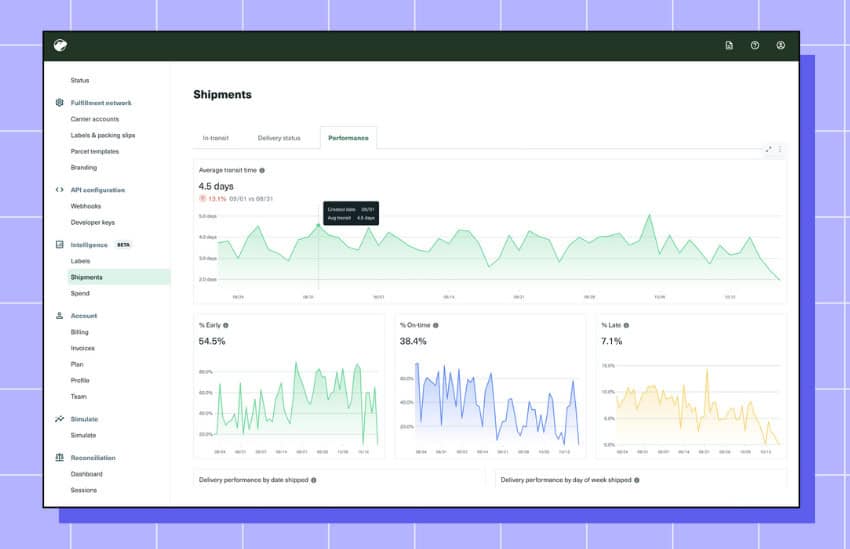
Each order showed:
- Customer name and address
- Chosen shipping service
- Weight
- A little flag icon showing which carrier offered the best rate
Then, for a test, I uploaded some Amazon orders using a CSV, and it pulled in the data and suggested tags or columns for data where the column title didn’t exactly match.
That’s where Shippo immediately felt smarter than Pirate Ship. Instead of copy-pasting addresses or manually comparing rates, I had one dashboard showing all unfulfilled orders, live rates, and even delivery estimates side by side.
The automation rules are easy to use, with the simple if/then rules I mentioned before. For example:
- If the destination is international → use DHL Express
- If package weight is under 1 lb → use USPS First Class
- If package weight is over 5kg → use ‘Heavy’ packaging template
- If order value is > $20 → automatically add “Signature Required”
This makes creating labels really quick compared to Pirate Ship. Plus, you can batch print labels, using the best rates.
In short, it feels like Pirate Ship’s fast simplicity with a layer of smart automation on top.
What I Liked
- Keeps most of Pirate Ship’s simplicity but adds useful automation and integrations.
- Clean, modern dashboard with clear navigation.
- Syncs instantly with Shopify, Etsy, and WooCommerce, no CSVs needed.
- Easy IF/THEN automation rules.
- Batch printing up to 100 labels saves serious time.
- Access to hundreds of global carriers with live rate comparisons.
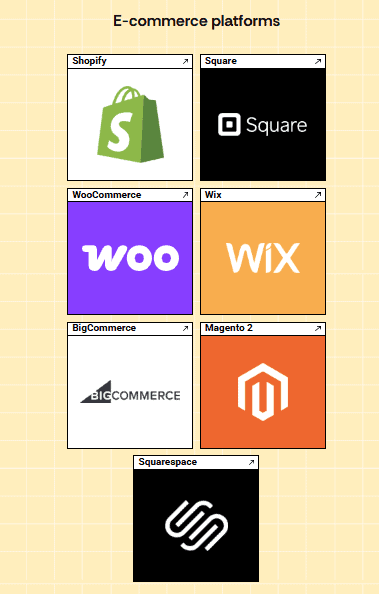
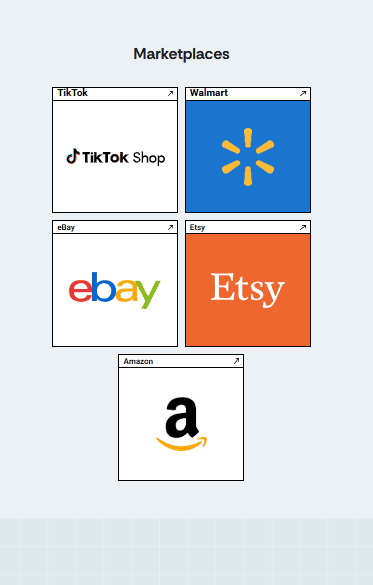
What I Didn’t
- Pirate Ship is still faster for one-off, simple label printing.
- 100% free vs Shippo’s subscription model gives Pirate Ship an edge for very small sellers.
- Shippo requires a few minutes of setup to connect stores and build automations.
- Slight learning curve if you’ve only used Pirate Ship’s one-screen workflow before.
Who It’s For
- Sellers ready to scale beyond Pirate Ship but still want something simple.
- Shopify, WooCommerce, or Etsy store owners.
- Anyone shipping internationally or wanting automation.
Pricing
Free plan includes up to 30 orders per month.
Paid plan from $17-199 per month
2. ShipStation – Best for Very High-Volume Sellers
ShipStation is one of the biggest names in shipping software. It’s what many enterprise-level eCommerce brands use once they hit hundreds (or thousands) of orders a week.
The main difference between Shipstation and Shippo is complexity and cost. ShipStation has very advanced automations and deep reporting tools. However, in my experience, the extra automations come at the cost of complexity. It is more difficult to set up automations on Shipstation vs Shippo, and for 99% of businesses, it is unnecessary.
If you already have a shipping team who are experienced in setting up automations, then it could be a good option.

It’s incredibly powerful, but it can also feel like overkill if you’re growing.
Key Features
- Powerful automation rules: ShipStation’s automations are one of the most advanced in the industry.
- Multi-channel integrations: Connects with 100+ sales channels, including Shopify, Amazon, eBay, Etsy, and Walmart, as well as inventory and accounting tools.
- Batch label printing: Process and print hundreds of shipping labels at once — ideal for fulfillment teams handling large daily volumes.
- Branded tracking pages and emails: Send customers shipment updates that match your brand, with your logo and colors instead of generic carrier pages.
- Reports and analytics: Detailed shipping cost breakdowns, delivery performance tracking, and carrier spend analysis help identify savings opportunities.
What I Liked
- Deep automation for every shipping scenario.
- 100+ integrations (Shopify, Amazon, eBay, Walmart, etc.).
- Custom-branded tracking pages and packing slips.
- Reliable batch printing for hundreds of orders.

What I Didn’t
- Occasional reliability issues reported by users on Reddit and Trustpilot
- Pricey for small sellers, some core features behind higher tiers.
- The interface is fairly cluttered.
When ShipStation Makes Sense
If you’re managing multiple stores, warehouses, or selling on both Shopify and Amazon, ShipStation can centralize it all.
Pricing
Free plan includes up to 10 orders per month.
Paid plan from $14.99-$799 per month
3. Easyship – Best for International Shipping
Easyship shines when your business goes global. If you’ve ever tried shipping to the UK, Canada, or Australia from the U.S., you know how confusing duties and taxes can get.
Easyship solves that by showing landed cost (shipping + tax + duties) upfront.

It also integrates with a huge number of international carriers, including quite niche ones like New Zealand Post and Singapore Post.
Key Features
- 550+ international carriers
- Duties and tax calculator
- Real-time international checkout rates
- Customs form automation
What I Liked
- Great for cross-border eCommerce
- Clear visibility of total cost
- Excellent carrier variety
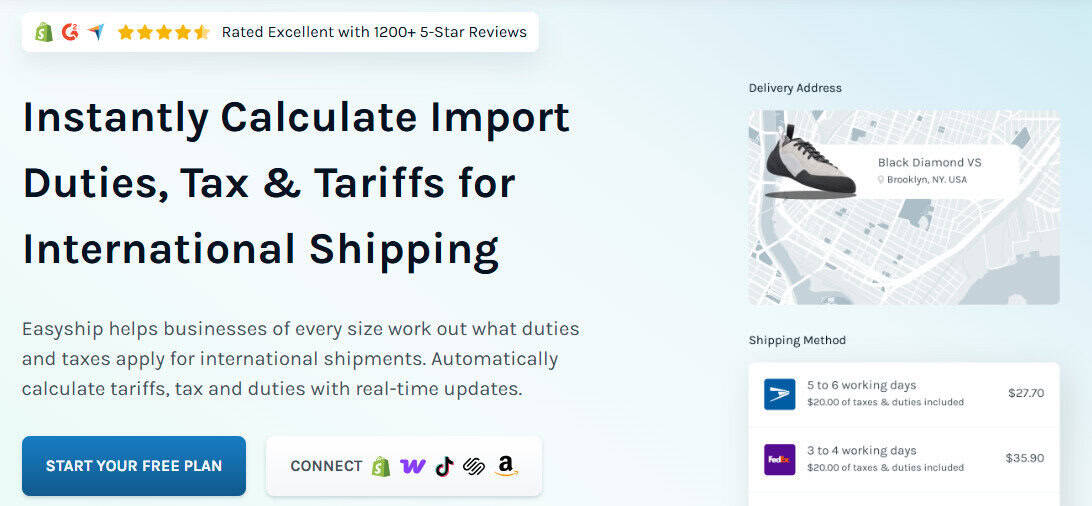
What I Didn’t
- More expensive for domestic U.S. shipments
- Less good automations
- Interface feels slower than Shippo’s
- Lots of really bad customer reviews – 1.9/5 on Trust Pilot
If you ship globally and need a one-stop international tool, Easyship works ok. But for most sellers, Shippo’s mix of simplicity and global support is a better balance. Shippo and Shipstation have all the same features, but better automations and reporting, plus they have great reputations.
Pricing
Free plan includes up to 50 orders per month.
Paid plan from $29-$199 per month
4. Sendcloud – Best for European-Focused Merchants
If your store operates in the EU or UK, Sendcloud is probably the most well-known shipping software partner. Whilst it does work internationally, it’s a European-first platform that connects to DPD, GLS, PostNL, and DHL Express, and all major European carriers.
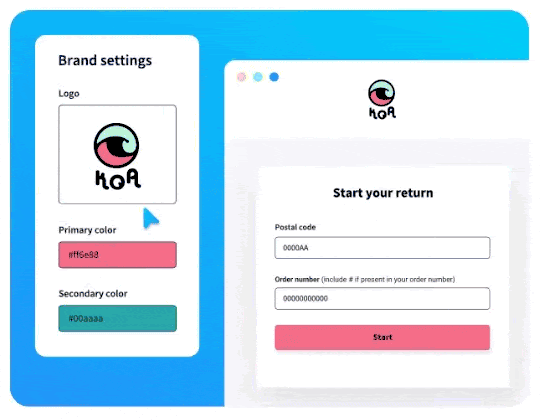
Key Features
- Great regional coverage in Europe.
- Built-in branded returns portal.
- Shopify, WooCommerce, and PrestaShop integrations.
- Pricing tailored to EU-based stores.
Sendcloud has a really nice checkout plugin that shows real-time rates and delivery details. It also has some automations, but they aren’t as deep as Shippo or Shipstation.
It is also quite expensive, with pricing starting at $33 up to $799, with no free tier. So it feels like more of a risk to try it, especially if you aren’t Europe-focused.
What I Liked
- Excellent European carrier support
- Automated returns workflow
- Multi-store support
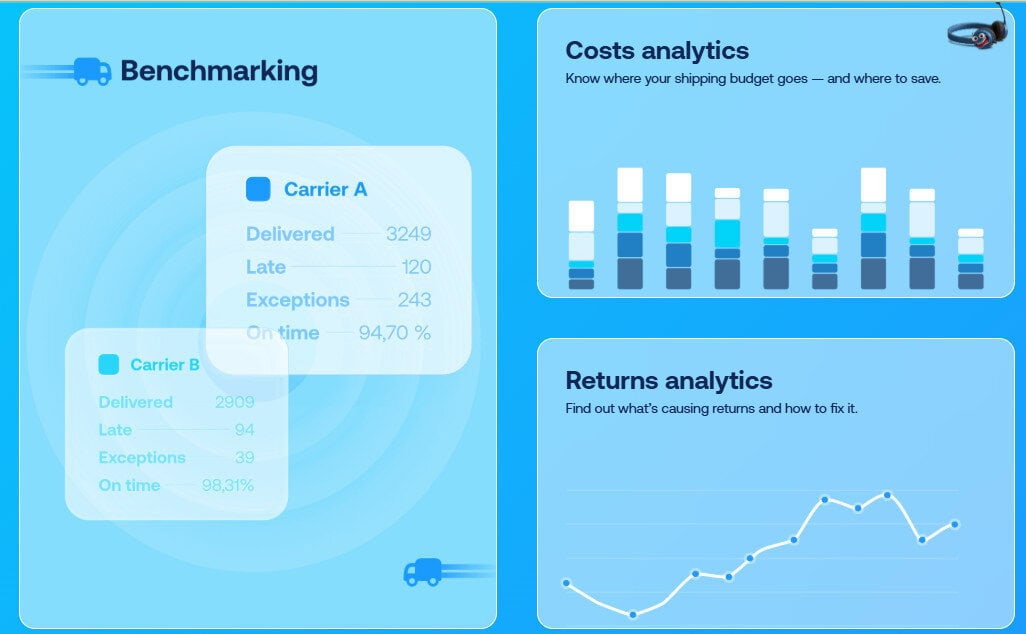
What I Didn’t
- Weak coverage outside Europe
- More complex UI
- No free plan
If your audience is primarily in the EU, Sendcloud is a great fit. But if you sell to both Europe and the U.S., Shippo’s global coverage gives you far more flexibility.
Pricing
$29- $799 per month. There is no free tier.
5. ShippingEasy – Great for Beginners, Who Need Their First Step Out of Pirate Ship
ShippingEasy is a solid mid-tier platform that gives you a step up from Pirate Ship. To me, it feels like it sits somewhere in between Pirate Ship and Shippo in terms of functionality and level of service.

It’s aimed at smaller sellers who want automation and reporting without enterprise complexity. But I think the trade-off is you are paying for a tool with less functionality, for more or less the same price. The learning curve isn’t too steep, but you will outgrow this tool quickly.
Key Features
- Shipping discounts
- Email marketing add-on for customer follow-ups
- Works with Shopify, Amazon, and eBay

What I Liked
- Easy to use
- Good support and onboarding resources
- Decent automation options
- Great reviews
What I Didn’t
- You will outgrow it quickly
- Limited functionality compared to platforms of a similar price bracket
Pricing
Free plan includes up to 25 orders per month.
Paid plan from $19.99-$189.99 per month
6. AfterShip – Best for Tracking and Branded Delivery Updates

AfterShip started out as a pure tracking tool, and it’s still one of the best for that. But it has since grown into a full shipping and post-purchase experience platform, now supporting label creation for 80+ carriers and tracking for over 1,200 carriers worldwide.
That means you can now manage shipments, generate labels, and automatically send branded email or SMS updates to your customers, all in one place.
What I Liked
Aftership has a really nice dashboard that shows your orders and tracking in one place. It has a lot of integrations, including with TikTok shop and Shein, which is different to most of the other platforms.
I think it is more like ShippingEasy, great for beginners or smaller brands, but it lacks full automations and reporting.
It still has access to great shipping rates, and it is really easy to use straight out of the box.
If you are looking to reduce the number of customer emails you get about shipping, or you sell trendy products on TikTok, then it could be a really affordable option.
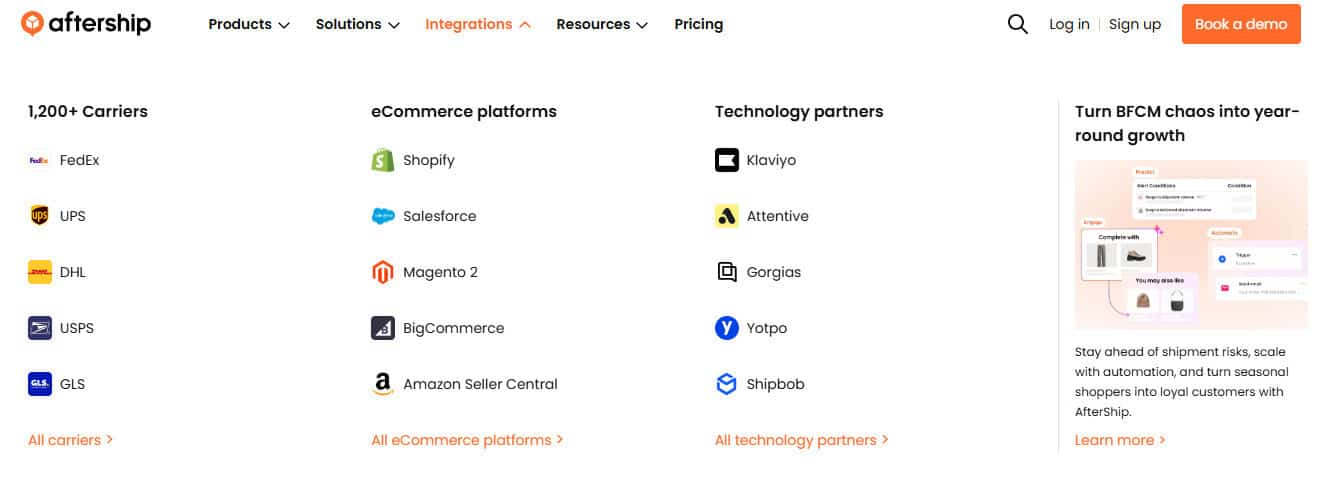
What I Didn’t
The main downside is support. Many users mention slow or scripted replies from customer service and slow responses.
If your business depends on quick turnaround during peak shipping seasons, that can be frustrating.
It’s also lighter in automation compared to Shippo or ShipStation. You get tracking and some basic label generation, but not the same level of rule-based carrier selection or fulfillment logic.
Pricing
- Starts at $10/month per user
- Free tier with limited tracking updates (good for testing)
Final Verdict: Which Pirate Ship Alternative Should You Choose?
If you’re running a small U.S.-only shop, and you just need labels printing, then Pirate Ship still does the job. But once you hit even moderate volume or want to run automations and reporting, it quickly starts to feel limited.
Here’s my take after testing all of these:
- Shippo is the best all-rounder – simple enough for beginners, powerful enough for growing brands.
- ShipStation is for large-scale and automation, but it’s pricier and heavier.
- Easyship is unbeatable for global shipping.
- Sendcloud rules Europe.
- ShippingEasy makes sense if you want shipping + inventory in one place.
- After Ship is great for tracking, and if you sell on TikTok or Shein.
If you’re outgrowing Pirate Ship, I’d start with Shippo.
It gives you everything Pirate Ship does (and more), without forcing you into a complex setup or expensive plan.

